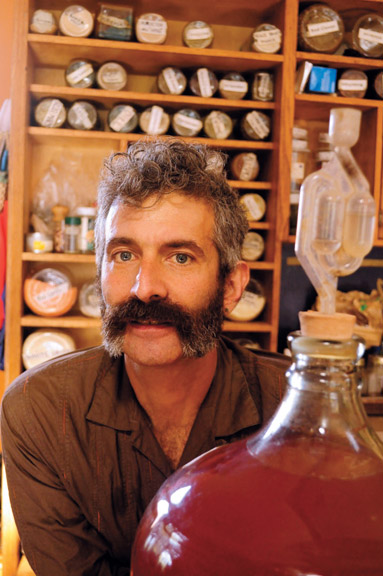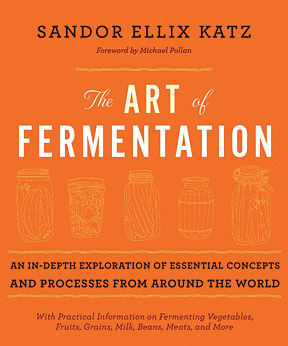The Art of Fermentation by Sandor Ellix Katz ’85 (Chelsea Green).
Decades ago, while working long hours in New York City, Sandor Ellix Katz ’85 learned he was HIV positive. Deciding that he needed to make a dramatic change, he moved to a commune in rural Tennessee, where he found quiet and both clean air and water. He also discovered what would become his life’s passion: fermentation, in particular culturing foods with live, often wild microorganisms for preservation, taste, and health.

According to the National Institutes of Health’s Human Microbiome Project, microorganisms inhabit every part of the human body, outnumbering human cells ten to one. Some are pathogens, which in a healthy person are mostly held in check by teeming numbers of beneficial bacteria. The overuse of antibiotics has reduced the number of good bacteria, however, creating opportunities for superbugs and making people fearful of foods that aren’t refrigerated.
Katz’s book is part cookbook, part treatise, and part tour of traditional cultures. It includes instructions for hundreds of ferments of vegetables, grains, meat, and more. (If you want actual recipes, you’ll need his earlier book, Wild Fermentation.) Katz introduces readers to traditionally fermented foods—pickles, buttermilk, bread, and even ketchup—and explains that many industrially manufactured versions of these foods get their “sour” taste from chemicals or copious applications of vinegar. A jar of vinegary pickles has none of the good bacteria found in naturally soured dill pickles, he notes.
Fermentation actually changes the character of food. Cabbage left out on a counter will eventually decompose into black slime. But brine it, add spices, and age it with friendly microorganisms, and you’ll get a delicious kimchi or a sauerkraut that will get sourer as it ages, without decomposing. The fun of this book is learning how to distinguish bacteria that make us sick from those used to ferment food. Sometimes it’s hard to do. For example, Katz describes an Alaskan Inupiat recipe for fermented salmon heads: “Wash salmon heads well, get all the blood and scum off… . Put the heads in a flour sack and put the sack in the grass hole. Cover it with a few inches of grass, then cover with sand, and then with a board so people won’t step on it. Let it stay until the smell is a little strong and the nose skin slips off.”

Using Katz’s guidelines, I made a fermented hot-pepper sauce that I simply transferred into an old hot-sauce bottle. I also brewed t’ej, an Ethiopian honey wine, in an old glass jug and, lacking sophisticated brewing valves and other gadgets, raided my son’s toy box for a ten-cent balloon that worked fine. Now my kitchen counter is full of colorful foods in different, bubbly states of ferment.
Katz answers questions about about drinking raw milk and getting started fermenting food.




